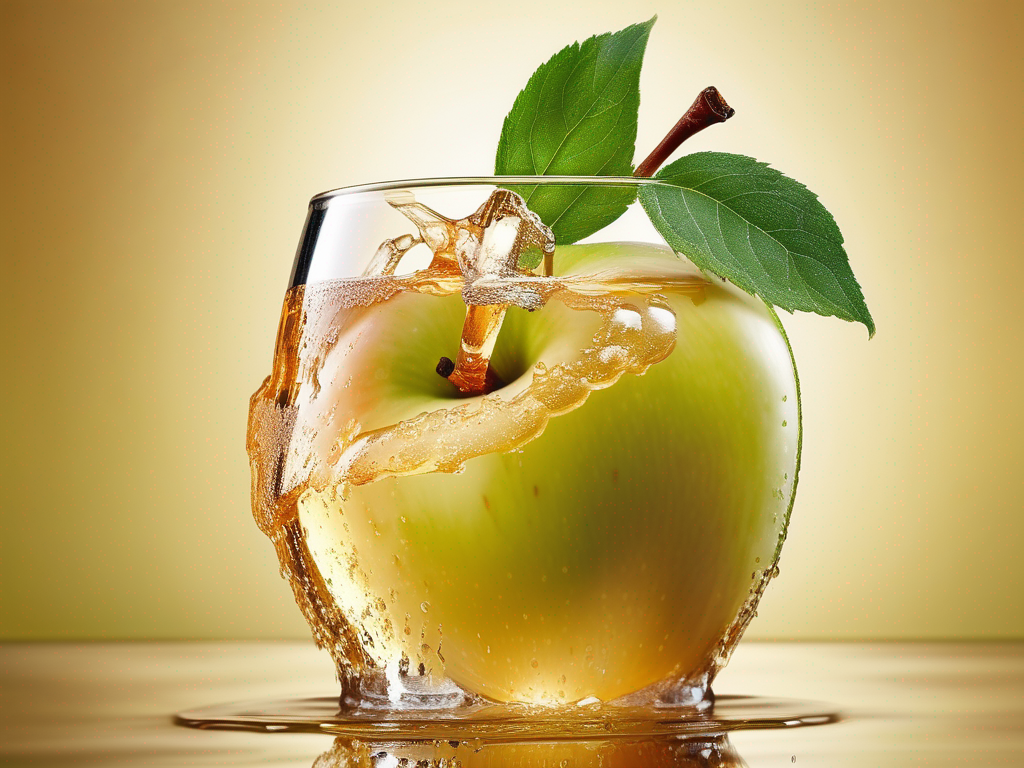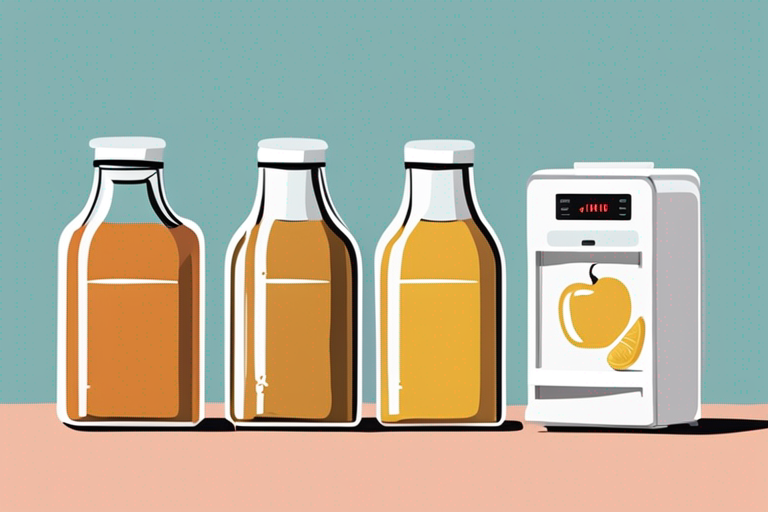
The Ultimate Guide to Properly Storing Leftover Apple Juice in the Refrigerator
Get Your Free Food Safety Cheat Sheet
30 most common foods with instant answers. Print it and stick it on your fridge—completely free!
The Ultimate Guide to Properly Storing Leftover Apple Juice in the Refrigerator
Are you a fan of apple juice but often find yourself with leftover juice that you're not sure how to store properly? Proper storage of opened apple juice in the refrigerator is crucial to maintain its freshness and prevent any potential food safety risks. In this comprehensive guide, we will walk you through the steps to ensure your leftover apple juice stays safe and delicious for longer. (Apple juice refrigerated opened)
Why Proper Storage Matters
Properly storing leftover apple juice in the refrigerator is essential for several reasons:
- Maintaining Freshness: Storing apple juice correctly helps retain its flavor and nutrients.
- Preventing Spoilage: Improper storage can lead to the growth of harmful bacteria and spoilage.
- Food Safety: Following proper storage guidelines reduces the risk of foodborne illnesses.
Now, let's delve into the steps you need to follow to store leftover apple juice in the refrigerator.
Step-by-Step Guide to Storing Leftover Apple Juice
1. Transfer the Apple Juice
When you have leftover apple juice in its original container, consider transferring it to a clean, airtight container before storing it in the refrigerator. This step helps maintain the freshness and flavor of the juice.
2. Seal the Container Properly
Ensure that the container you use to store the apple juice has a tight seal to prevent air from entering and compromising the quality of the juice. Airtight containers help maintain the freshness of the juice and prevent any odors from the refrigerator from affecting its taste.
3. Store at the Right Temperature
The ideal temperature for storing apple juice in the refrigerator is between 32°F and 40°F (0°C and 4°C). Make sure your refrigerator is set to the correct temperature to keep the juice fresh and safe to consume.
4. Avoid Cross-Contamination
To prevent cross-contamination, store the apple juice away from raw meat, seafood, and other perishable items in the refrigerator. Keep the juice on a separate shelf to avoid any potential contact with harmful bacteria.
5. Check the Expiration Date
Before storing leftover apple juice in the refrigerator, check the expiration date on the original packaging. If the juice is close to expiring, it's best to consume it soon or freeze it for later use.
Safety Tips for Storing Apple Juice
- Check for Signs of Spoilage: Before consuming leftover apple juice, check for any unusual odors, discoloration, or mold growth. If you notice any of these signs, discard the juice immediately.
- Use Glass or BPA-Free Plastic Containers: Opt for glass or BPA-free plastic containers to store apple juice, as they are safer and do not leach harmful chemicals into the juice.
- Label the Container: To keep track of the storage date, label the container with the date you stored the apple juice in the refrigerator.
- Avoid Freezing: While freezing apple juice is an option, the texture and flavor may change upon thawing. It's best to consume refrigerated apple juice within a few days for optimal taste.
Conclusion
Properly storing leftover apple juice in the refrigerator is essential to maintain its freshness, flavor, and safety. By following the steps outlined in this guide, you can ensure that your apple juice remains delicious and safe to consume for an extended period. Remember to transfer the juice to a clean container, seal it tightly, store it at the right temperature, and check for signs of spoilage before drinking. With these simple tips, you can enjoy your apple juice without any worries about food safety concerns. [Read more about apple juice refrigerated opened](/food/apple juice refrigerated opened) (Apple juice refrigerated opened)
Related Posts
Here are some other articles you might find helpful:
- Is it Safe to Consume Leftover Apple Juice Refrigerated and Opened?
- Preserving Apple Juice Refrigerated Opened: Tips for Longer Freshness
- The Best Way to Store Apple Juice Refrigerated Opened
- Is Your Refrigerated Opened Apple Juice Still Safe to Drink?

Authoritative Food Safety References
These agencies and university labs inform every tip and health precaution we publish.
USDA FoodKeeper – Cold Storage Guidelines
Official refrigerator, freezer, and pantry timelines maintained by the U.S. Department of Agriculture.
Visit USDA FoodKeeperFDA Produce Safety Rule & Grower Guidance
Field-to-fridge handling practices that prevent contamination of fruits, vegetables, and leafy greens.
Visit FDA Produce SafetyCDC Foodborne Illness Prevention Hub
Surveillance-backed guidance on pathogens, symptoms, and steps to reduce foodborne illness risk.
Visit CDC Food SafetyUC Davis Postharvest Technology Center
University research detailing optimal storage atmospheres for produce after harvest.
Visit UC Davis PostharvestPenn State Extension – Home Food Preservation & Safety
Peer-reviewed extension bulletins on safe canning, chilling, and reheating practices.
Visit Penn State ExtensionCan leftover apple juice be frozen for later use?
What are the signs that leftover apple juice has gone bad?
Can leftover apple juice be stored in a glass container?
Is it safe to drink leftover apple juice that has been left out at room temperature?
Get Your Free Food Safety Cheat Sheet
30 most common foods with instant answers. Print it and stick it on your fridge—completely free! Want more? Upgrade to the complete guide with 70+ foods.
Scan your food directly and get instant safety info using our AI-powered camera feature.